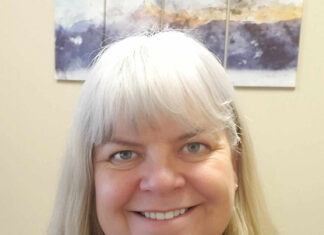No time for issue fatigue

A quick check of the Columbia River Crossing website shows that public meetings, design discussions and committee meetings of all sorts have been occurring since October of 2005. Therefore, it comes as little surprise that when the Project Sponsors Council held a listening session a couple of weeks ago, the turnout was disappointingly light (sessions were held both in Portland and in Vancouver). Particularly disappointing to Co-Chair of the Sponsor’s Council Steve Horenstein, was the lack of participants from the business community in Southwest Washington.
Some of you may be saying, “Really? After five and a half years of study, listening and meeting it’s still important? You really want more?” Turns out, not only is your participation still needed, your feedback to the coalition may be more important than ever.
Now that a design determination is down to three options (with two of those being hotly debated) the Sponsors Council does want to hear what the communities have to say – especially when it comes to the businesses in the region.
Public bodies such as the Project Sponsors Council typically have no challenge hearing directly from those with concerns about the project; critics often want to stop the project before it gets underway. However, the voices missing from these public meetings are actually the voices of those who want it the most. The challenge for these individuals is getting to the public meetings, because we all have businesses to run that are already being interrupted by the lack of predictability of travel time on the I-5 corridor.
This is not to say that every business owner believes the project is designed and exactly right for the region – looking at news reports we know this is not the case. But the Sponsors Council can’t rely on news reports. They need to hear from us directly and now is the time. Additionally, we need to be letting our local elected officials know why we think it or isn’t important so they can bring those thoughts to the Sponsors Council discussions.
I have heard from companies who believe a new crossing and corridor (even with tolls) would be a better situation for their business because they can plan for the number of trips, the cost of the tolls and the necessary labor. Now, they are at the mercy of the drawbridge and choke points that can add costly labor expenses because the drivers are cued up in stand-still traffic.
Still others we’ve talked to have grave concerns about the duration of the construction phases of a new bridge and the disruption it will bring to both the commute between Vancouver and Portland and to downtown Vancouver businesses. Additional concerns question whether either state will actually be able to fund their share of the projects with both states fighting crushing revenue shortfalls.
From our perspective there are key issues, which on balance, tip in favor of a new crossing. Those issues include:
▪ Predictable freight movement between Oregon and Southwest Washington
In business, especially of late, the focus on margin is constant. When the cost equation is constantly compromised by a drawbridge, it puts pressure on that margin causing what was a competitive cost/revenue ratio to become non-competitive. To allow traffic to stack up on the interstate for a mile or better multiple times a day every week is costing both businesses and consumers. A new crossing can restore predictability to this part of the margin equation and assure businesses dependent on city to city travel the elimination of a competitive disadvantage.
▪ Structural reliability
A look at the images coming out of Japan after the earthquake matched up with reports concerning the lack of seismic structural integrity on the current bridge spans. With the constant predictions that our region is due for the proverbial “big one,” I’m left thinking there is no better time than now to reconstruct the crossing. Will a new crossing guarantee it will withstand a 9.0 earthquake? Not at all. But the current spans apparently won’t withstand a 6.0 shaker, which is 300 times weaker than the Japanese quake.
▪ Looking to provide a 50 to 100 year solution
While the proposed crossing will provide necessary relief along the corridor, it really is a structure that’s intended to be a solution for the next five to ten decades. It will never be less expensive than if we build it now.
Whether or not you agree with our reasons for moving ahead, it’s important the ultimate decision be made with the voice of business having been heard as a piece of the official message. So yes, six years later they are still listening. But most importantly, they want to listen to business.



